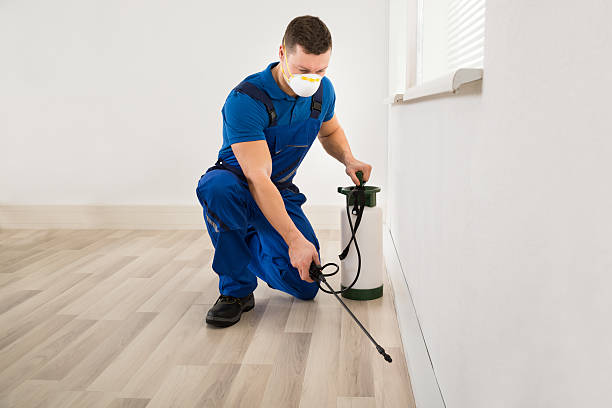Expert Insect Control Techniques for Long-Term Outcomes
Professional insect control techniques envelop a detailed technique that starts with an extensive inspection and assessment, complied with by exact parasite recognition to recognize their behavior patterns. The execution of Integrated Insect Monitoring (IPM) concepts, paired with eco-conscious therapies, forms the keystone of lasting parasite eradication.
Inspection and Assessment
Upon entering a building for pest control solutions, the initial step is a complete examination and analysis to recognize the level of the problem and figure out one of the most reliable therapy strategy. Expert insect control service technicians are trained to carefully analyze the facilities, trying to find indications of insect activity such as droppings, munch marks, nests, or any structural damages. They will certainly also evaluate the problems that might be attracting bugs, such as food resources, water leaks, or entrance points.

Insect Recognition and Actions

Furthermore, understanding the actions of the identified pest is key to implementing effective control measures. Understanding where pests nest, what they feed on, and their task patterns can aid pest control experts create techniques to eliminate them efficiently. Some pests might be nocturnal, while others are more energetic throughout the day. This understanding enables for the application of treatments at optimal times for optimum efficiency.
Integrated Parasite Administration (IPM)
Integrated Pest Administration (IPM) strategies integrate multiple methods to control and avoid parasite invasions in a lasting and eco-friendly manner. Pest control Washington DC. By incorporating techniques such as organic control, habitat adjustment, modification of cultural techniques, and using resistant selections, IPM aims to reduce making use of chemical pesticides
One of the essential principles of IPM is the focus on avoidance. This proactive method entails surveillance bug populaces on a regular basis to discover any kind of possible issues before they organic pest control intensify. By identifying insect issues beforehand, pest control measures can be executed quickly and properly.
Furthermore, IPM promotes using safe parasite control approaches whenever possible. This can include utilizing natural predators of the bugs, presenting advantageous bugs, or making use of scents to disrupt mating patterns. By reducing reliance on chemical pesticides, IPM not only safeguards the atmosphere however additionally aids keep an equilibrium in the ecological community.
Environmentally-Friendly Therapies
Implementing eco-conscious strategies in pest control procedures can effectively deal with invasions while prioritizing environmental sustainability. Environmentally-friendly treatments concentrate on minimizing the impact of pest control approaches on ecosystems, non-target organisms, and human health. These approaches usually entail the usage of natural predators, such as ladybugs or nematodes, to control pest populaces, reducing the need for chemical treatments. Furthermore, methods like habitat adjustment, best time to treat for termites such as readjusting wetness levels or removing food resources, can assist discourage pests without using harmful materials.
Another trick aspect of environmentally-friendly therapies is making use of natural and naturally degradable products that break down promptly without leaving dangerous residues in the setting. Botanical pesticides originated from plants like chrysanthemums or neem use effective bug control while posing very little risk to non-target types. Employing approaches like heat treatments or scent catches can target details pests with accuracy, decreasing the overall ecological impact of bug control practices.
Continuous Surveillance and Maintenance
Continual monitoring and upkeep are essential components of effective insect control monitoring. Ongoing surveillance plays a vital duty in ensuring that pest infestations are discovered very early and managed immediately. Normal assessments by trained professionals are necessary to identify any signs of pest activity, examine the performance of previous treatments, and make adjustments to the parasite control plan as required. By monitoring pest populaces with time, parasite control specialists can track fads, prepare for prospective problems, and execute safety nets to minimize the threat of future problems.
Along with tracking, upkeep techniques are important for long-lasting parasite control success. This includes carrying out correct sanitation steps to remove possible food and water sources for insects, securing off access points to avoid bugs from getting in the premises, and attending to any kind of structural problems that might promote parasite infestations (bed bug heat treatment). By integrating recurring monitoring and maintenance into an integrated bug administration method, businesses can ensure a pest-free atmosphere and secure their residential or commercial property versus pricey damage and health risks
Final Thought
In final thought, making use of specialist pest control techniques such as complete examination and analysis, exact bug recognition and understanding of their habits, integrated pest management techniques, environmentally-friendly treatments, and recurring surveillance and upkeep are necessary for accomplishing long-term lead to check these guys out parasite control. By implementing these techniques, people can properly take care of insect infestations and keep a pest-free setting in a lasting manner.